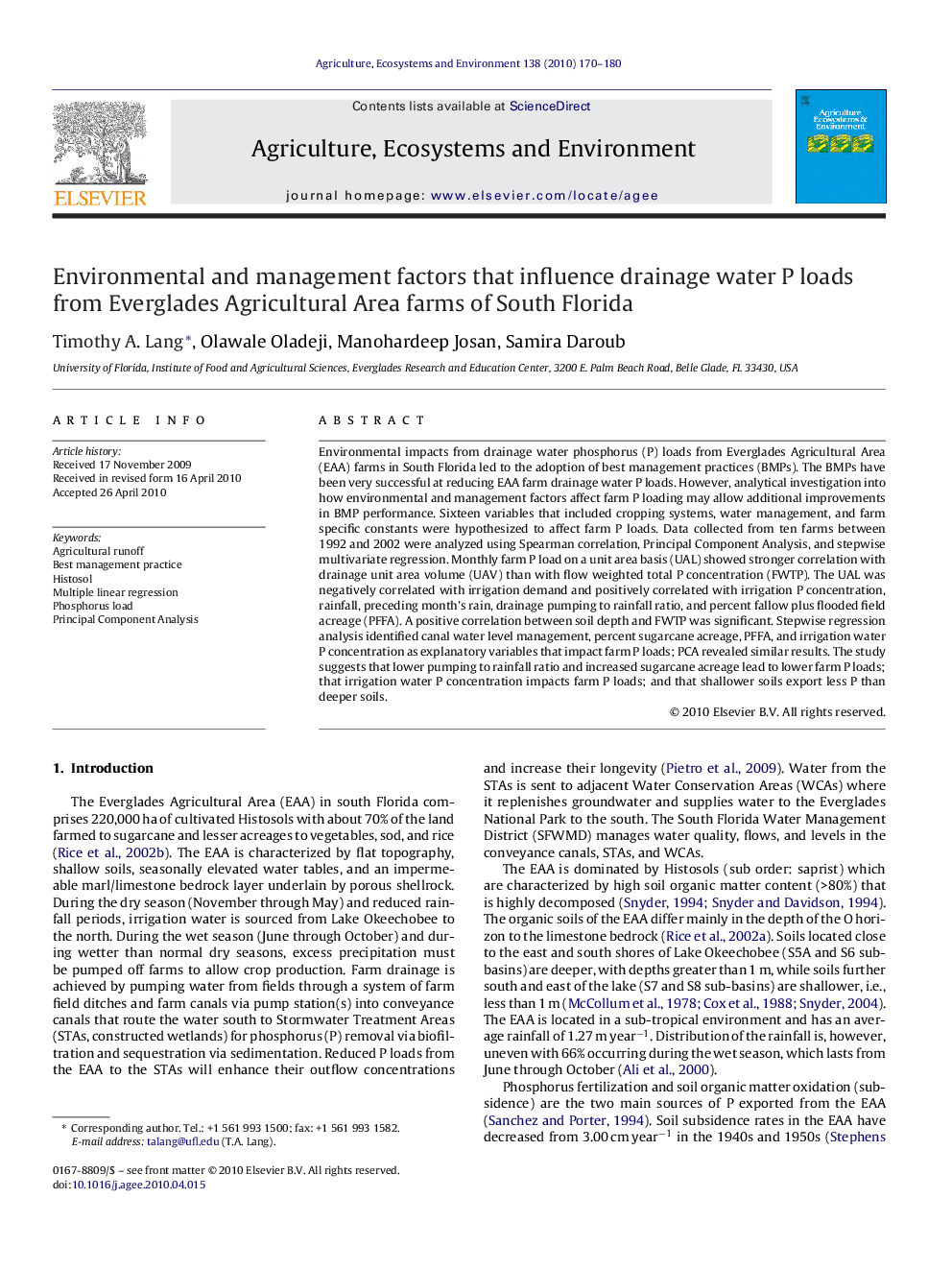| Article ID | Journal | Published Year | Pages | File Type |
|---|---|---|---|---|
| 2414950 | Agriculture, Ecosystems & Environment | 2010 | 11 Pages |
Environmental impacts from drainage water phosphorus (P) loads from Everglades Agricultural Area (EAA) farms in South Florida led to the adoption of best management practices (BMPs). The BMPs have been very successful at reducing EAA farm drainage water P loads. However, analytical investigation into how environmental and management factors affect farm P loading may allow additional improvements in BMP performance. Sixteen variables that included cropping systems, water management, and farm specific constants were hypothesized to affect farm P loads. Data collected from ten farms between 1992 and 2002 were analyzed using Spearman correlation, Principal Component Analysis, and stepwise multivariate regression. Monthly farm P load on a unit area basis (UAL) showed stronger correlation with drainage unit area volume (UAV) than with flow weighted total P concentration (FWTP). The UAL was negatively correlated with irrigation demand and positively correlated with irrigation P concentration, rainfall, preceding month's rain, drainage pumping to rainfall ratio, and percent fallow plus flooded field acreage (PFFA). A positive correlation between soil depth and FWTP was significant. Stepwise regression analysis identified canal water level management, percent sugarcane acreage, PFFA, and irrigation water P concentration as explanatory variables that impact farm P loads; PCA revealed similar results. The study suggests that lower pumping to rainfall ratio and increased sugarcane acreage lead to lower farm P loads; that irrigation water P concentration impacts farm P loads; and that shallower soils export less P than deeper soils.
